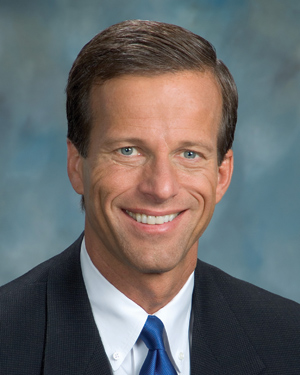Thune holds forest waste hearing




January 1, 1970
BY Kris Bevill
The definition of "renewable biomass" was the subject of a Senate Agriculture Committee's Energy Subcommittee hearing Aug. 18 in Rapid City, S.D. As ranking member of the subcommittee, Sen. John Thune, R-S.D., held an open forum to discuss the definition of the term and how it applies to potential feedstock in the nearby Black Hills National Forest.
"Modifying the definition of ‘renewable biomass' to include cellulosic ethanol manufactured from forest byproducts would provide a critical tool to better manage private lands and national forests, while also producing additional homegrown and sustainable sources of energy," Thune said.
Senate Energy and Natural Resources Committee member Tim Johnson, D-S.D., attended the hearing, as well as representatives from the Black Hills National Forest and the Black Hills Forest Resource Association, a private forest landowner, and KL Process Design Group LLC President Randy Kramer.
Thune told hearing attendees that the final definition of "renewable biomass" as written in the 2008 farm bill failed to include material removed or harvested from federal lands, including national forests, because the U.S. House of Representatives changed the wording "behind closed doors" in the final days of debate before the bill's passage. Thune's Senior Advisor Jon Lauck said the definition was changed due to environmental concerns on behalf of some representatives.
Testimony given at the hearing proved that any environmental concerns are bogus, according to Lauck. "[Witnesses] said it's actually worse for the forests to leave the waste there," he said, adding that the current removal method involves burning unusable piles of woody biomass, which emits carbon dioxide into the air.
Witnesses at the hearing testified that approximately 200,000 tons of wood waste are available annually in the Black Hills National Forest. Thune noted that one ton of woody biomass could produce up to 105 gallons of renewable fuel. He has introduced a bill that would amend the "renewable biomass" definition to include woody biomass from national forests. According to Lauck, the bill has been referred to the Senate Energy and Natural Resources Committee for review. The senator's definition has also been included in the recently formed Gang of 10's energy bill, called the New Energy Reform Act. At press time, the senator was optimistic that the bill would begin making its way through the legislative process when Congress reconvened in the fall.
"Modifying the definition of ‘renewable biomass' to include cellulosic ethanol manufactured from forest byproducts would provide a critical tool to better manage private lands and national forests, while also producing additional homegrown and sustainable sources of energy," Thune said.
Senate Energy and Natural Resources Committee member Tim Johnson, D-S.D., attended the hearing, as well as representatives from the Black Hills National Forest and the Black Hills Forest Resource Association, a private forest landowner, and KL Process Design Group LLC President Randy Kramer.
Thune told hearing attendees that the final definition of "renewable biomass" as written in the 2008 farm bill failed to include material removed or harvested from federal lands, including national forests, because the U.S. House of Representatives changed the wording "behind closed doors" in the final days of debate before the bill's passage. Thune's Senior Advisor Jon Lauck said the definition was changed due to environmental concerns on behalf of some representatives.
Testimony given at the hearing proved that any environmental concerns are bogus, according to Lauck. "[Witnesses] said it's actually worse for the forests to leave the waste there," he said, adding that the current removal method involves burning unusable piles of woody biomass, which emits carbon dioxide into the air.
Witnesses at the hearing testified that approximately 200,000 tons of wood waste are available annually in the Black Hills National Forest. Thune noted that one ton of woody biomass could produce up to 105 gallons of renewable fuel. He has introduced a bill that would amend the "renewable biomass" definition to include woody biomass from national forests. According to Lauck, the bill has been referred to the Senate Energy and Natural Resources Committee for review. The senator's definition has also been included in the recently formed Gang of 10's energy bill, called the New Energy Reform Act. At press time, the senator was optimistic that the bill would begin making its way through the legislative process when Congress reconvened in the fall.
Advertisement
Advertisement
Advertisement
Advertisement
Upcoming Events





